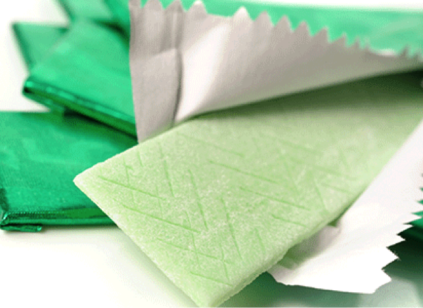Gingivitis is hardly an adult disease. It’s so prevalent, in fact, that even children and teens cannot escape its reach. When bad bacteria decide to set up camp in our mouths, and we don’t do enough to sweep them away via proper brushing, flossing and rinsing, “camp” starts to morph into a giant bacteria playground. And, there’s no bigger playground for these bacteria than in the mouth of a teenager. The sudden delivery of hormones, inconsistent oral hygiene habits, and carb-heavy meals like pizza and sweets add up to making your teenager a prime candidate for gingivitis. Help them stay ahead of the problem with these easy-to-implement ideas.
- Avoid preaching about diet by having healthy food on hand: Kids are going to indulge in stuff that’s no good for them. Nothing you can do about that: it’s just part of growing up. So, do what you can when you are in charge. Keep healthy snacks around the house, and have family meals that highlight healthy food. A few suggestions: fruits high in Vitamin C are good for building strong healthy gum tissue, and meats, cheeses, nuts and milk are believed to be helpful in the remineralization of tooth enamel. Veggies of all sorts are, of course, good for both teeth and gums.
- Make sure they have enough to eat: This may sound counter-intuitive with all the obesity news around us, but the fact is that active kids need a lot of calories – often times, more than sedentary adults. To help them avoid snacking on junk in between meals, make sure they’ve got enough “real food” to keep them sated until dinnertime. This is important for teeth because, in addition to most snacks being carb-heavy (which mouth bacteria love), frequent snacking keeps acidity in the mouth continually high, aiding bacteria in their playground building activities.
- Daughters are unique, share with them why: Okay, we’ll go out on a limb here and state the obvious. Girls are much better at taking care of their teeth than boys. That said, girls have a hormonal nemesis boys don’t as they grow into adulthood: progesterone and estrogen. Both cause an increase in blood flow to gum tissue, which creates sensitivity issues in the mouth, AND an increased immune response to bacteria, inherently placing girls at greater risk for gingivitis. What to do? Capitalize on the fact that girls are typically better at taking care of their teeth, and arm them with the knowledge that the more care they show those pearly whites of theirs, the less likely they’ll be to experience problems.
- Apply a bit of negative reinforcement: No one wants to be the stinky-breath-guy – particularly in high school. Bad breath, yucky gums, and yucky teeth is what manifests in a mouth where gingivitis has taken hold. Perhaps a friendly reminder of this eventuality can help you help your kids stay ahead of the disease.
- Set a good example: There is no question that exhibiting good habits, encourages good habits. The thing with brushing and flossing, though, is that it’s usually a solitary, closed-door experience. Think about it. Did you ever see your parents brush their teeth? Ever? Bring it out into the open by dry brushing first. The visual of you walking about the house brushing will serve as a good reminder to your kids to do their own teeth good.
- Don’t Share The Spoon: Here’s a surprise! Did you know that tooth decay can be transmitted from one person to another? Yep. By using your own fork or spoon to dig out your personal portions from the serving tray, you may be unwittingly transferring your unique mouth bacteria to the mouths of everyone else in the family. So buy a few extra utensils and use them separately to keep the sharing of bacteria at bay.
- Get them to the Dentist: Gingivitis doesn’t happen overnight, so the single best thing you can do to help your teenagers avoid the disease is to get them to the dentist at least twice a year. Three times a year may even be ideal if they have particularly poor brushing and flossing habits. Strong-arming a teenager into good oral care habits is hardly effective, and sometimes, only thenext best thing works, which is getting them to the dentist. Don’t skip this step.
Pretty easy, right? There’s nothing in here that’s too overbearing, and nothing too dramatic. Just 7 simple tips that will help you protect your teenagers (and you for that matter), from the severe inconvenience of gingivitis. Start today!






